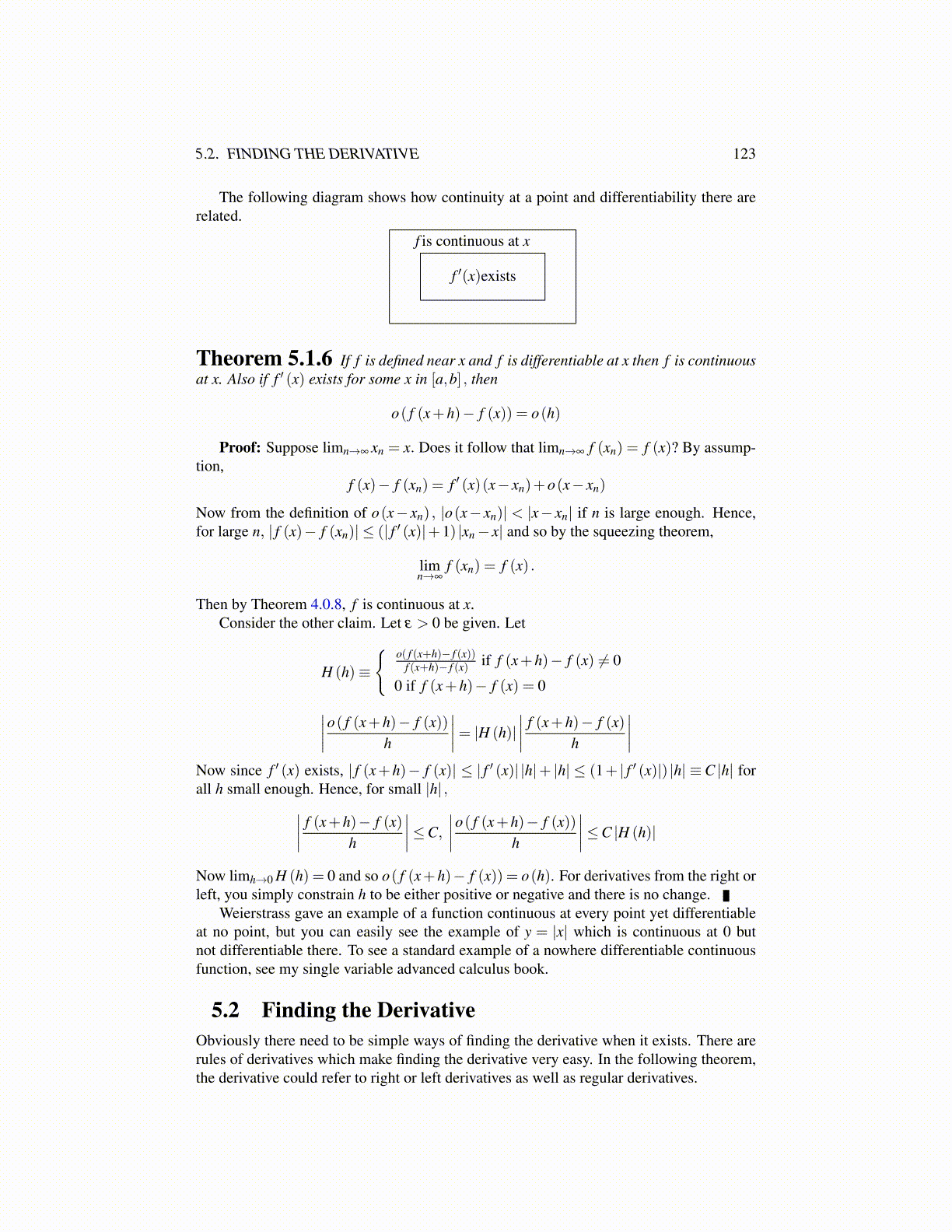
5.2. FINDING THE DERIVATIVE 123
The following diagram shows how continuity at a point and differentiability there arerelated.
f ′(x)exists
f is continuous at x
Theorem 5.1.6 If f is defined near x and f is differentiable at x then f is continuousat x. Also if f ′ (x) exists for some x in [a,b] , then
o( f (x+h)− f (x)) = o(h)
Proof: Suppose limn→∞ xn = x. Does it follow that limn→∞ f (xn) = f (x)? By assump-tion,
f (x)− f (xn) = f ′ (x)(x− xn)+o(x− xn)
Now from the definition of o(x− xn) , |o(x− xn)| < |x− xn| if n is large enough. Hence,for large n, | f (x)− f (xn)| ≤ (| f ′ (x)|+1) |xn − x| and so by the squeezing theorem,
limn→∞
f (xn) = f (x) .
Then by Theorem 4.0.8, f is continuous at x.Consider the other claim. Let ε > 0 be given. Let
H (h)≡
{o( f (x+h)− f (x))
f (x+h)− f (x) if f (x+h)− f (x) ̸= 0
0 if f (x+h)− f (x) = 0∣∣∣∣o( f (x+h)− f (x))h
∣∣∣∣= |H (h)|∣∣∣∣ f (x+h)− f (x)
h
∣∣∣∣Now since f ′ (x) exists, | f (x+h)− f (x)| ≤ | f ′ (x)| |h|+ |h| ≤ (1+ | f ′ (x)|) |h| ≡ C |h| forall h small enough. Hence, for small |h| ,∣∣∣∣ f (x+h)− f (x)
h
∣∣∣∣≤C,
∣∣∣∣o( f (x+h)− f (x))h
∣∣∣∣≤C |H (h)|
Now limh→0 H (h) = 0 and so o( f (x+h)− f (x)) = o(h). For derivatives from the right orleft, you simply constrain h to be either positive or negative and there is no change.
Weierstrass gave an example of a function continuous at every point yet differentiableat no point, but you can easily see the example of y = |x| which is continuous at 0 butnot differentiable there. To see a standard example of a nowhere differentiable continuousfunction, see my single variable advanced calculus book.
5.2 Finding the DerivativeObviously there need to be simple ways of finding the derivative when it exists. There arerules of derivatives which make finding the derivative very easy. In the following theorem,the derivative could refer to right or left derivatives as well as regular derivatives.